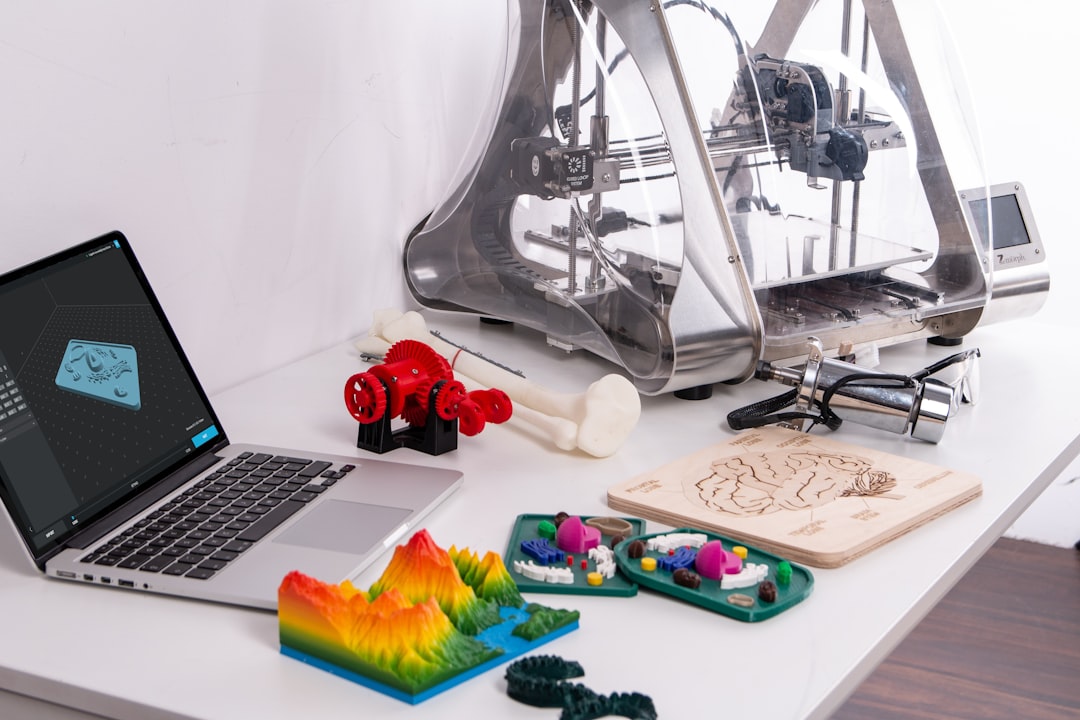Fun Ways to Integrate STEM Education at Home
In today’s fast-paced world, STEM (Science, Technology, Engineering, Mathematics) education is more important than ever. As a parent, you might be wondering how you can give your child a head start on this critical area of learning right at home. Whether it’s making math a fun part of daily activities or introducing simple experiments with household items, integrating STEM education at home doesn’t have to be complicated.
In fact, it can be a delightful adventure you embark on with your child. This blog will explore innovative methods for parents to weave STEM concepts into everyday life, making learning an engaging and fun experience. So, grab your lab coat (metaphorically, of course) and let’s dive into the exciting world of STEM, right from the comfort of your living room.
Benefits of STEM Education at home

STEM education, encompassing Science, Technology, Engineering, and Mathematics, has become a cornerstone of modern education, underlining its importance in today’s fast-evolving world. Let’s delve into why STEM is crucial and how integrating it into home learning can be massively beneficial for children.
Importance of STEM education in today’s world
In a world where technology and innovation drive progress, STEM education prepares students for a future filled with opportunities and challenges. It teaches them not only the hard skills like coding and engineering principles but also soft skills like problem-solving, critical thinking, and creativity. These are essential for success in nearly every career path in the 21st century, making STEM literacy invaluable for the next generation. Moreover, as we face global challenges like climate change and sustainable development, having a strong background in STEM can empower individuals to contribute to solutions and make meaningful changes in the world.
Benefits of integrating STEM at home
Integrating STEM education at home can greatly enhance a child’s learning journey. First, it creates a seamless connection between what is taught in schools and what children experience in their everyday lives, making learning more relevant and engaging. It also offers parents a beautiful opportunity to bond with their children over fun and educational activities, fostering a love for learning and curiosity. Additionally, early exposure to STEM can help eliminate stereotypes and barriers, particularly for girls and minorities, encouraging them to pursue careers in these fields. Lastly, incorporating STEM into daily routines helps children develop a growth mindset, enabling them to view challenges as opportunities to learn and grow.
Creative Ideas for Integrating STEM education at Home
Bringing STEM education into your home doesn’t have to be complicated or expensive. Here are some simple yet effective ideas to get you started.
Conducting simple science experiments
Science is all about discovering how the world works, and what better way to learn than through hands-on experiments? Start with basic experiments using everyday items. For example, you can explore density with a simple sink-or-float test in a bowl of water or create a volcano with baking soda and vinegar. These activities not only teach scientific principles in a fun way but also encourage curiosity and the scientific method of making predictions and observations.
Building engineering projects using household items
Channel your inner engineer and tackle practical building projects with your kids. Use recyclables or craft supplies to build bridges, towers, or even simple machines like catapults. These projects help children learn engineering concepts like design, structure, and balance, while also emphasizing creativity and resilience through problem-solving and iterative improvement.
Coding activities for kids
In today’s digital age, coding is a fundamental skill. Fortunately, there are numerous resources and apps available that make learning to code fun and accessible for children. Start with free coding games or apps designed for kids, which teach the basics of programming through interactive storytelling or game design. As they progress, children can graduate to more complex projects, such as creating their own websites or simple video games. These coding activities not only build important digital skills but also teach logical reasoning and patience.
By incorporating these STEM activities into your home routine, you’re not just educating your children; you’re preparing them for the future in a fun and engaging way. So, dive in and enjoy the journey of exploration and learning together!
Utilizing Technology for STEM Learning
Technology is not just a tool for entertainment; it’s a powerful ally in the quest for knowledge. In this digital age, leveraging technology can make STEM (Science, Technology, Engineering, and Mathematics) learning more engaging and accessible for children. Let’s explore how parents can enhance their child’s STEM education at home through technology.
Educational apps and websites for STEM
The internet is brimming with resources designed to make learning both fun and effective. Several educational apps and websites are tailored specifically for STEM learning, catering to a wide range of ages and interests. For younger children, apps like Toca Lab: Elements introduce basic chemistry through playful experimentation. Older kids might gravitate towards Khan Academy, which offers in-depth lessons on various STEM topics, from basic arithmetic to computer programming. These platforms often incorporate vibrant animations, interactive challenges, and instant feedback, making learning an enjoyable adventure. Encouraging your child to spend some time each day on these apps can significantly enrich their understanding and appreciation of STEM subjects.
Virtual STEM workshops and courses
Beyond apps and websites, the digital world offers immersive learning experiences through virtual workshops and courses. Many institutions and educational companies host live classes or recorded sessions on science experiments, coding boot camps, or math challenges. These sessions not only provide expert instruction but also allow children to interact with peers from around the globe, fostering a sense of community and shared passion for STEM. Platforms like Outschool or Codecademy are excellent places to start looking for courses that match your child’s interests and skill level.
Incorporating Mathematics in Daily Activities
Mathematics is all around us, hidden in the fabric of our daily lives. By highlighting these connections, parents can demystify math and show children its practical and fun application in everyday situations.
Math games and puzzles
Who said learning math has to be tedious? Introducing math games and puzzles into your family routine can transform math drills into exciting challenges. Board games like Math Rush or Prime Climb cleverly incorporate mathematical operations, making them a hit for game nights. Even classic games like Sudoku or Jenga can be adapted with math problems, adding a fun twist. These activities not only sharpen math skills but also encourage critical thinking and strategy planning.
Using math in cooking and baking
Cooking and baking are perfect opportunities to practice mathematics naturally. Inviting your child to help in the kitchen means engaging them in measuring ingredients, converting units, and understanding fractions. For example, doubling a recipe requires multiplication skills, while splitting a pizza into equal slices can teach division and fractions. These practical applications of math showcase its relevance and utility, making the learning experience relevant and enjoyable. So, the next time you’re in the kitchen, consider it a math classroom in disguise, and whip up some delicious lessons on mathematics!
By integrating STEM education into home activities and utilizing technology, parents can play a pivotal role in fostering a deep, enduring love for science, technology, engineering, and mathematics in their children.
Overcoming Challenges in Implementing STEM at Home
Navigating the path of integrating STEM education into your home environment can be a bit of a puzzle. Two of the most significant hurdles many parents face are time constraints and a lack of resources. However, with a sprinkle of creativity and a dash of determination, these obstacles can transform into opportunities for growth and innovation.
Addressing time constraints
In the hustle and bustle of daily life, finding moments to dedicate to STEM learning can feel like searching for a needle in a haystack. Yet, integrating STEM doesn’t have to mean hours of extra work. Small, daily activities can offer rich learning opportunities. Consider cooking together to explore measurements and chemical reactions, or take advantage of bath time to discuss the properties of water and buoyancy. The key is to weave learning naturally into activities you’re already doing, transforming mundane tasks into exciting educational adventures.
Dealing with lack of resources
The perception that STEM education requires expensive gadgets or kits is a common misconception. The reality is that the world around us is rich with resources ripe for exploration. Use everyday objects to build simple engineering projects or turn recycling materials into an inventor’s workshop. Online platforms and libraries also offer a wealth of free or affordable resources, from educational apps to DIY science experiment guides. Encourage your children to see the potential in the ordinary, and you’ll unlock a world of possibilities with minimal investment.
Encouraging a Love for Learning in Children

Instilling a passion for learning, particularly in the realms of science, technology, engineering, and math, can set a child on a trajectory toward endless curiosity and innovation. This journey begins with nurturing their natural sense of wonder and recognizing their achievements along the way.
Fostering curiosity and exploration
Children are natural-born scientists, always asking questions and exploring the world around them. Encourage this curiosity by being genuinely engaged with their inquiries. When they ask questions, instead of providing immediate answers, explore the answers together. This could mean looking up information online, conducting simple experiments, or observing the natural world. Create an environment where questions are welcomed, and the pursuit of answers is a shared adventure. This approach helps children understand that learning is a lifelong journey, not just a destination.
Providing positive reinforcement and praise
In the journey of learning, every little step counts. Recognize and celebrate your child’s effort and achievements, no matter how small. Positive reinforcement not only boosts their confidence but also reinforces their interest in STEM. When they solve a math problem, finish a coding project, or simply ask insightful questions, let them know how proud you are. This validation encourages them to take on new challenges and fosters a resilient attitude towards learning. Remember, the focus should be on the effort and the process of learning, fostering an environment where it’s okay to make mistakes and learn from them. This approach ensures that their love for STEM continues to grow, laying the foundation for a lifetime of exploration and discovery.
Conclusion
Incorporating STEM education into daily home life is not only an engaging way to enhance your child’s learning but also a fun opportunity to bond over shared discoveries and projects. By taking small steps to include elements of Science, Technology, Engineering, and Mathematics into everyday routines, you create a nurturing environment that fosters curiosity, critical thinking, and a love for learning. Remember, the aim is to inspire and empower your children to explore these fields, making education an adventure rather than a chore.
– Start with simple projects and gradually introduce more complex concepts as their interest and abilities grow.
– Encourage questions and be ready to explore the answers together.
– Celebrate their successes and learn from failures, emphasizing the importance of persistence and resilience.
By integrating STEM into your family’s life, you’re not just preparing your children for future academic and career success; you’re giving them the tools to understand and shape the world around them. Happy experimenting!
Read about The Impact of Music and Arts on Children’s Cognitive Growth
